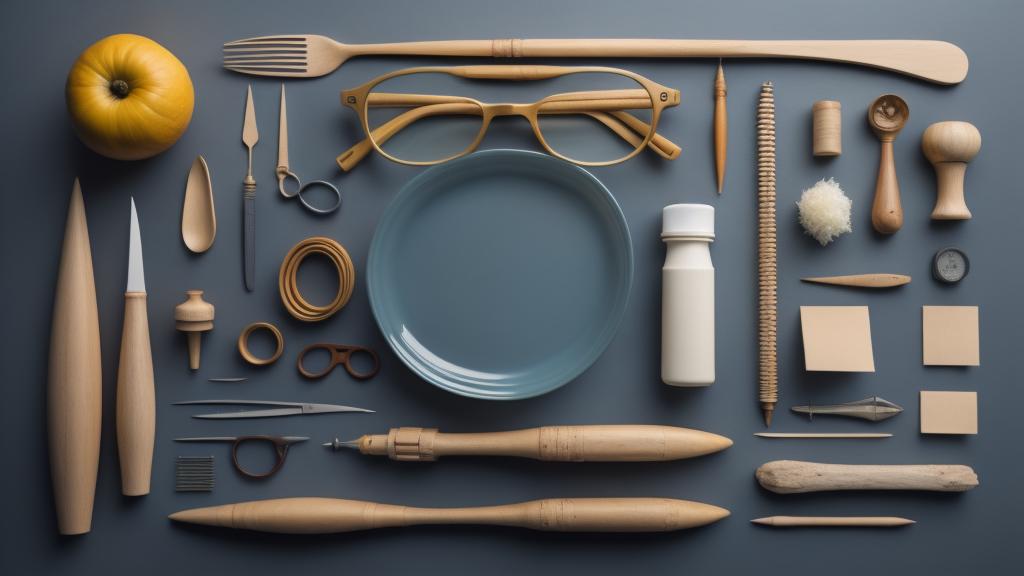From the moment we wake up to the time we go to bed, we are surrounded by objects that make our lives easier and more comfortable. But have you ever stopped to wonder about the history behind these everyday items? Let's take a journey into the fascinating origins of some of the most common objects we often take for granted.
### The humble toothbrush
We start our day with it, but the toothbrush has a rich history going back thousands of years. The earliest known toothbrushes date back to around 3000 BCE, in the form of frayed twigs known as 'chew sticks' used by ancient civilizations such as the Babylonians and Egyptians. Fast forward to the 15th century, the Chinese developed the first bristle toothbrushes using boar hair attached to bamboo or bone handles. It wasn't until the 20th century that nylon bristles were introduced, revolutionizing dental care as we know it today.
### Eyeglasses: A vision of the past
Eyeglasses are another staple of modern life that have a surprisingly ancient origin. The earliest known form of corrective lenses appeared around the 13th century in Italy. These rudimentary glasses were simple convex lenses used to aid those with farsightedness. Over time, advancements in lens manufacturing and the understanding of optics led to the development of more sophisticated eyeglasses. Today, millions of people around the world rely on them to see clearly.
### The curious case of the fork
While utensils like spoons and knives have been around for millennia, the fork has a surprisingly contentious history. Originating in the Middle East, the fork made its way to Europe in the 11th century but was met with resistance. It wasn't until the 16th century that the fork became more widely accepted in Europe, thanks to the influence of Italian nobles. Now, it's an essential part of dining etiquette, found on tables across the globe.
### The evolution of the umbrella
The umbrella, a simple yet effective tool for staying dry, has been used for thousands of years. The earliest known use of umbrellas dates back to ancient Egypt and China, where they served to shield noble individuals from the sun. It wasn't until the 18th century that umbrellas became widely used for rain protection in Europe. Modern umbrellas are a far cry from their ancient counterparts, thanks to advancements in materials and design.
### The story behind staplers
Staplers may seem like a mundane office tool, but their origins are quite regal. The first known stapler was created in the 18th century for King Louis XV of France. Each staple was handcrafted and bore the royal insignia. It wasn't until the late 19th century that staplers became more practical and accessible for widespread use. Today, they are an indispensable part of office life.
### Tea bags: A happy accident
Tea bags are a common kitchen item that owe their existence to a happy accident. In the early 20th century, a New York tea merchant named Thomas Sullivan began sending samples of his tea to customers in small silk bags. To his surprise, many customers found it easier to brew tea using the bags rather than removing the tea leaves. This led to the invention and popularization of the tea bag, which has since become a staple for tea drinkers worldwide.
### The rise of the zipper
The zipper is another everyday item with a fascinating history of trial and error. The earliest attempt at a zipper-like device was made in the 19th century, but it wasn't until 1913 that a more practical version was created by Gideon Sundback, a Swedish-American engineer. His design improved the reliability and functionality of the zipper, which soon became essential in clothing, luggage, and countless other applications.
### The secret life of post-it notes
Post-it notes are ubiquitous in offices and homes, but their invention was a stroke of serendipity. In 1968, Dr. Spencer Silver, a scientist at 3M, was trying to create a super-strong adhesive but ended up with a low-tack adhesive instead. Years later, his colleague Arthur Fry realized this adhesive could be used to create repositionable bookmarks, leading to the creation of Post-it notes in 1980. Their popularity has only grown since.
Exploring the origins of these everyday objects provides a deeper appreciation for the ingenuity and creativity that have shaped our world. Each item represents a fascinating story of trial, error, and eventual success, transforming simple ideas into indispensable tools of modern life.
The Surprising History of Everyday Objects We Take for Granted

